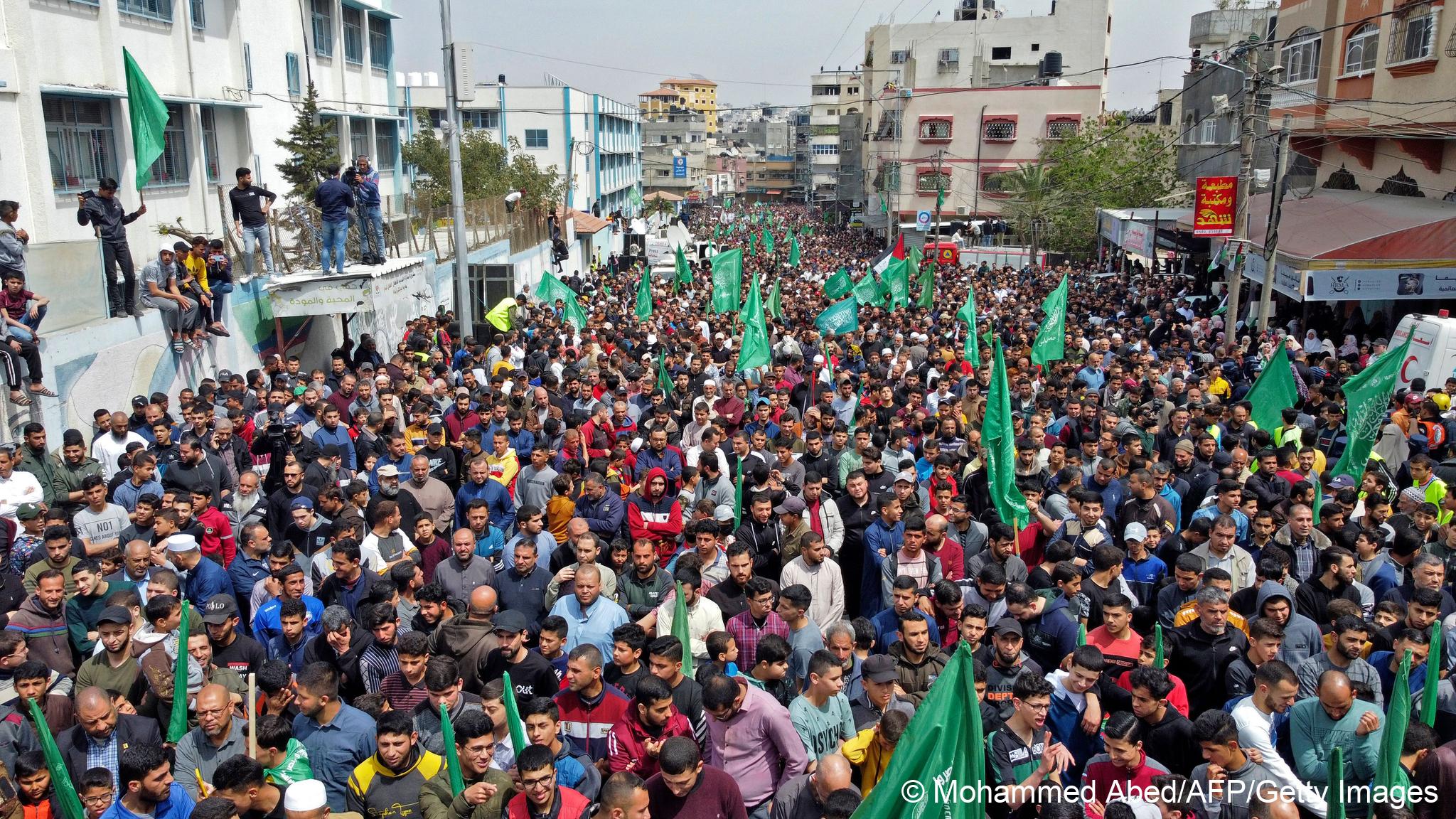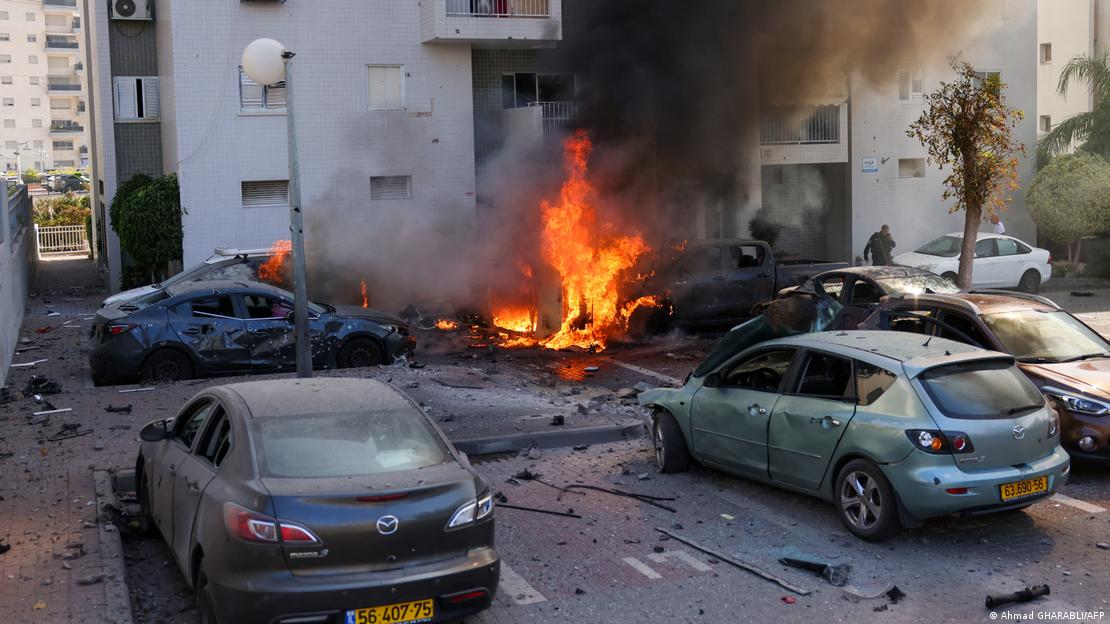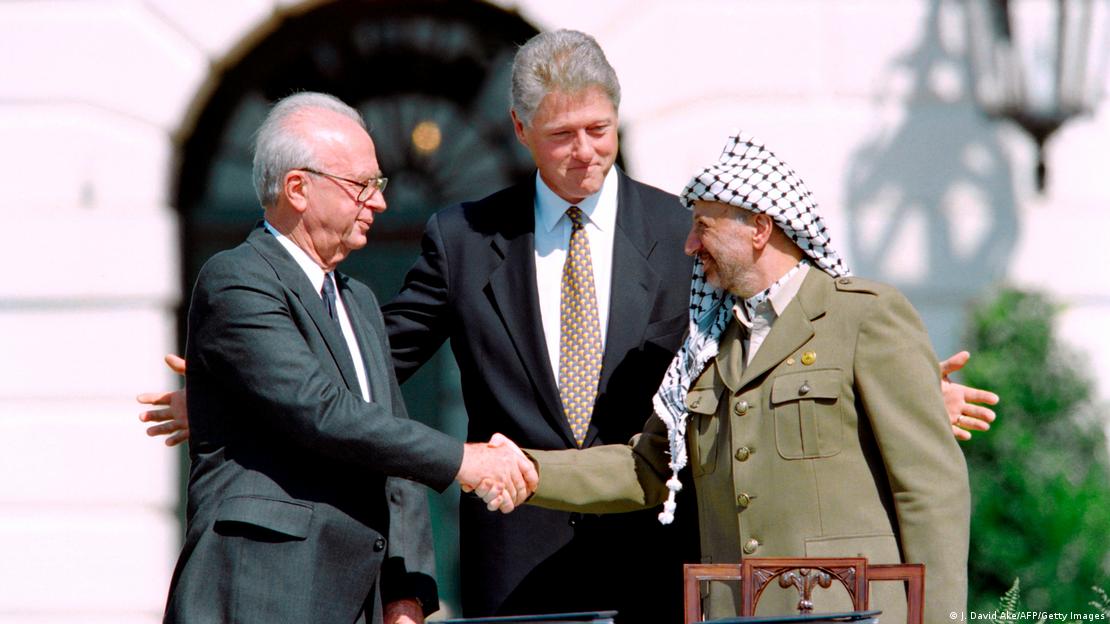The unpredictable enemy

In 1987, shortly after the outbreak of the first Intifada, Palestinian supporters of the Egyptian Muslim Brotherhood living in the Gaza Strip renamed themselves the "Islamic Resistance Movement" (Arabic acronym: Hamas). They had two main aims: destroy the state of Israel through an armed "holy war" to establish Islamic rule on its territory and throughout Palestine, and take over leadership of the Palestinian people.
After nearly two decades of opposition to secular rival Fatah – the leading force within the Palestine Liberation Movement (PLO) – whose rapprochement and 1993 peace agreement with Israel Hamas tried in vain to torpedo by means of repeated terrorist attacks against Israelis, the latter aim seemed to be within reach in January 2006. Worn down by the terrorism perpetrated by militant Palestinian groups, Israel had withdrawn from the Gaza Strip the year before.
In the elections in the Palestinian territories held shortly thereafter, Hamas emerged as the surprise winner. It proved unable or unwilling to come to an agreement on a possible division of power with the loser Fatah – whose representatives would continue negotiating with Israel as before. In mid-June 2007, the Islamists then seized power in the Gaza Strip, their native territory, enabling them to begin implementing their vision of "Islamic rule over Palestine" at least in that area. Israel responded with a land and sea blockade that continues to this day.
Clandestine structures
During its time as an underground movement under Israeli occupation, Hamas had built up a multi-layered, partially clandestine structure. The social institutions set up by the Islamist movement in and around mosques were however operated in the open from the start. The movement's political leaders also appeared in public, largely tolerated by the Israeli occupiers. Among them were members of the Hamas politburo, some of whom invariably acted from abroad.

The composition of Hamas's Shura Council, which periodically appoints members of the politburo, has however always remained top secret. And Hamas's military arm was likewise distinguished from the outset by a secret structure. It was formed in 1986, and in 1992 it began publicly calling itself the "Izz ad-Din al-Qassam Brigades", after a Syrian nationalist who had joined the Palestinian resistance against the British Mandate rulers in Palestine and died in combat with British soldiers in 1935.
Hamas's military arm pursued its own goals, which did not always coincide with those of the political leadership. The operations it carried out often depended on the charisma and influence of its leaders – and on their relations with military forces in supportive countries such as Iran and Syria.
Autocracy and expansion
Hamas's autocratic rule after taking power in the Gaza Strip led to the rapid growth of the various branches of the movement. Hamas political personnel rapidly established a semi-state system in parallel with that of the Palestinian Authority (PA) in the West Bank. Within a few years, the Qassam Brigades were greatly expanded. In 2009, they already boasted nearly 7,000 fighters. By 2018, the number had doubled, and today their ranks are estimated to number around 30,000.
The Qassam Brigades have long since styled themselves as a regular army with specialised units. In addition to an elite missile unit, the "air force" (drones) and a "naval" command, they regularly dispatch infantry groups to parade in the streets or drive by in pickup trucks.

The fact that members of the Qassam Brigades always disguise themselves in public clashes with the image of a conventional army. And the extensive tunnel system that Hamas has built – along with its ally Islamic Jihad with its estimated 6,000 to 8,000 fighters in the "Al-Quds Brigades" – likewise remains hidden from view except for very limited glimpses for propaganda purposes.
The struggle against Israel
The Qassam Brigades have made it their mission to fight Israel with all military means at their disposal and to defend the Gaza Strip against attack. In the process, they have come into conflict at times with the political leadership of Hamas, for example over the use of available resources such as tax money, donations from Islamic charities, and financial aid from Qatar (since 2012) and, to a lesser degree, from Iran.
Probably in an attempt to circumvent such disputes, for the first time a member of the Qassam Brigades was appointed political chief of Hamas in the Gaza Strip in 2017: Jahia Sinwar. The Hamas government was extremely isolated at the time. It had broken off relations with the Assad regime in Syria, a traditional supporter, after the outbreak of the civil war there.
In the summer of 2014, Israel responded to massive rocket fire from the Gaza Strip with the military operation "Protective Edge", which claimed the lives of some 1,400 Palestinian civilians and was the most recent deployment of Israeli ground troops to date. A year earlier, the military coup against the Muslim Brotherhood that had just recently come to power in Egypt deprived Hamas of its major allies in the region. For the new ruler Abdul Fattah al-Sisi, the Islamists in Gaza were now another enemy.
A new political agenda
Sisi imposed severe restrictions on border traffic with Egypt and on the smuggling through tunnels from which Hamas had profited, aiming to exert pressure on Hamas and force it to distance itself from the Muslim Brotherhood and from its own militant stance toward Israel.

Hamas obliged, publishing a "Document" in May 2017 that, with its 42 articles, had the character of a policy paper. It was the first statement of its kind since the Hamas Charter of 1988, which since the start of the new millennium has hardly played a role in how the Islamist organisation presents itself to the media. Although the new Document did not officially annul the Charter, it did revise the 1988 version in some important respects.
The declared aim of liberating Palestine by force of arms was not abandoned, and in the new agenda Palestine is still a land defined as Islamic and Arab, belonging to the Palestinians as well as to the Islamic ummah, that is, the community of all Muslims.
But Hamas now declared that it was not fighting against the Jews, but against the Zionists as occupiers. Although, as before, it denied the Israeli state the right to exist and laid claim to the entire territory of historical Palestine, in the "Document" it simultaneously proclaimed its willingness to accept a Palestinian state within the 1967 borders. Furthermore, the new agenda dispensed with all previous references to the Egyptian Muslim Brotherhood as well as the numerous quotations from the Koran.
Israeli policy
At the time, the publication of Hamas' new agenda was dismissed by the office of Israeli Prime Minister Benjamin Netanyahu as "window dressing". It is common knowledge in Israel that Netanyahu has never really been interested in settling the conflict with Hamas – whose "destruction" he pompously announced as a goal in his 2009 election campaign.
Allowing Hamas to remain in place as a strong rival to Palestinian President Mahmoud Abbas, thus perpetuating a division among Palestinians in order to weaken the West Bank Authority, has been part of Netanyahu's strategy for years
Jerusalem forged its own plans for the Palestinians in the years following 2017, buoyed by the support of the Trump administration. The peace plan Trump introduced in January 2020 did grant the Palestinians – over their heads – their own state. But all external borders were to be under Israeli control.
The Palestinians rejected the plan because it would also have enabled Israel to annex around one-third of the West Bank, including the Jordan Valley. Although Trump's Middle East plan was soon history, Netanyahu's promised extension of Israeli "sovereignty" to the settlements continued to take shape.
In the meantime, the dual minister Bezalel Smotrich, a far-right member of Netanyahu's right-wing religious government, has set about realising this goal.
For months, people in the West Bank have been protesting against the progressing de facto annexation and the increasing violence committed by settlers. As the self-declared leader of the armed Palestinian resistance, Hamas in the isolated Gaza Strip obviously did not want to be side-lined here. Its large-scale attack on Israeli military bases and civilians in the border area was probably intended to once again underscore this claim to leadership and to attract the greatest possible attention – hence its appalling brutality.
© Qantara.de 2023
Translated from the German by Jennifer Taylor
